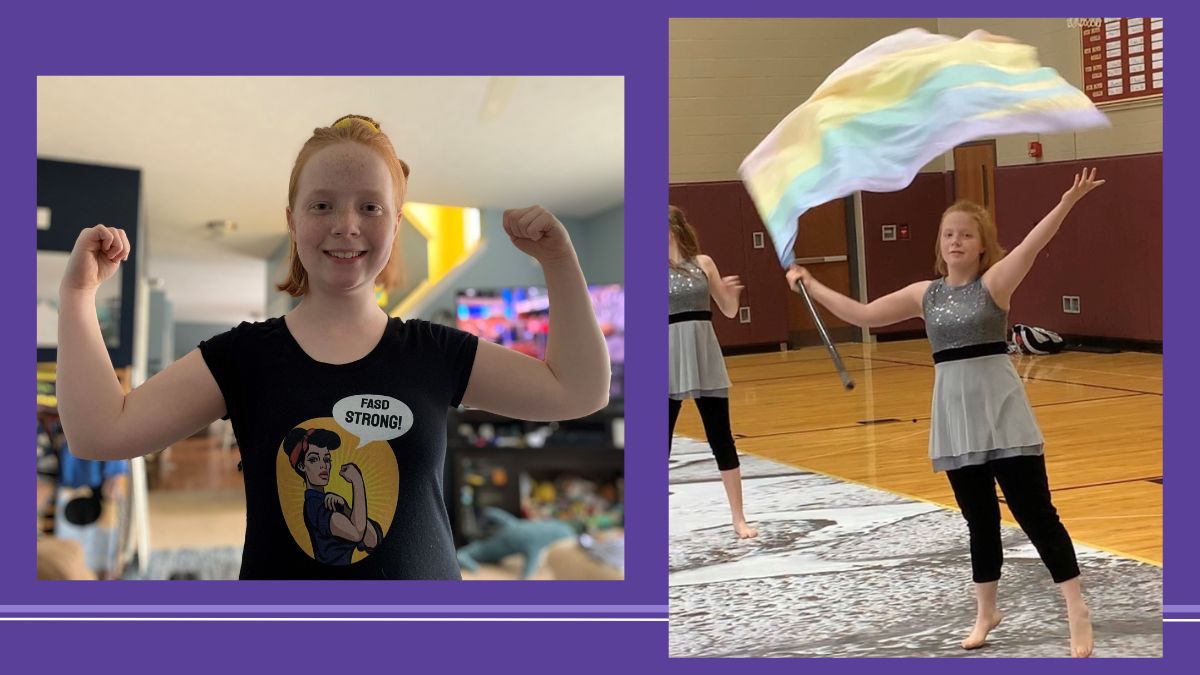At a glance
Heather and her husband, Jason, adopted Brenna and her three siblings from foster care. Weighing just 4 pounds and 13 ounces at birth, Brenna was so small that she came home wearing a doll's clothes.

Brenna's story
For years, Brenna's parents struggled to get her accurately diagnosed. She was slow to reach many milestones as an infant. Brenna also participated in early childhood services for speech and physical therapy. She was small for her age throughout elementary school.
Brenna also struggled academically. She had trouble staying on task, getting easily frustrated, and having outbursts and tantrums both in school and at home.
It was also difficult for her to understand concepts such as time, money, and organization. "When Brenna was in elementary school, she preferred to play with preschoolers rather than kids her age," her mother, Heather, recalls. She also took everything literally. When she said, "her classmates might be talking behind her back, Brenna said that wasn't true because she would hear them." When Brenna said she thought she would hear them, she took it to mean they would be behind her back talking.

Benefits of a diagnosis
Brenna's older sister was the first of the children to be diagnosed with an FASD. Brenna was diagnosed later at the age of 12 years. Deciding if a child has an FASD takes both a physical and developmental evaluation.
There is no biological test to diagnose FASDs. Clinicians must assess a child's exposure history, behavioral and intellectual function, as well as look for neurological and physical features. Also, many other disorders have similar symptoms which must be ruled out. Among several other tests, Brenna's evaluation included an independent living/life skills test.
According to Brenna's mother, "Getting the diagnosis helped understand where Brenna was coming from." Heather said that it helped them reframe the challenges they faced. It wasn't that Brenna was being defiant or wouldn't do things they asked of her. Rather, Brenna couldn't do it or lacked the skills and ability. They had to give Brenna the space and time to do it.
Heather commented, "It was helpful to get the diagnosis since it made resources in our area available to us, including a support group. Being part of the support group has helped us learn more about FASDs. It is a relief to know there are other children with similar issues. For example, there are others who must be reminded of personal hygiene, even though they are almost in high school." The diagnosis also explains why Brenna could be disruptive in school; the classes might be too hard for her to follow.
In addition to the support group, the diagnosis helped Brenna get access to local services. Having a diagnosis also ensured the school system had the information they needed to best support her.
Increasing awareness in her community
Brave and cheerful, Brenna has been instrumental in increasing awareness about FASDs in her school. After her diagnosis, she proudly wore her FASD T-shirt depicting a strong woman and handed out buttons and flyers about FASDs. Her mother says, "I was a bit worried, wondering if she would be able to handle the comments or teasing. But Brenna did great!"

Brenna is a kind and happy teen. She loves helping people and cares about her friends and is always checking up on them. She also calls and checks on her grandmother daily.
Brenna enjoys playing the piano and being in the choir. She also recently took up junior varsity color guard and is looking forward to the competitions.
